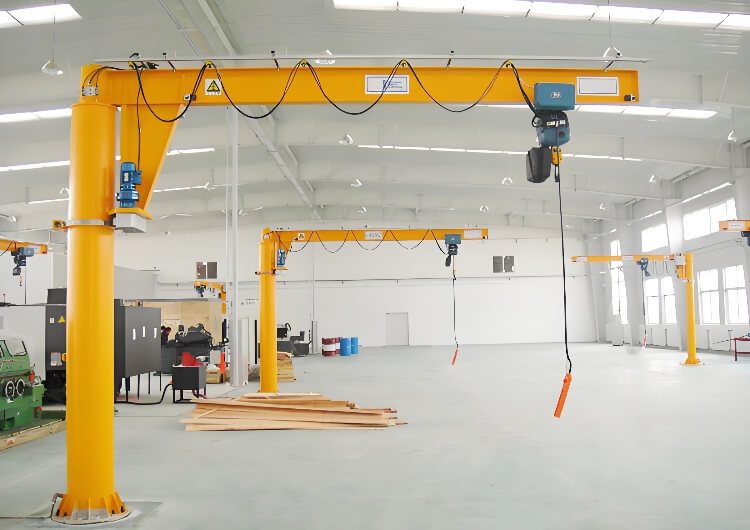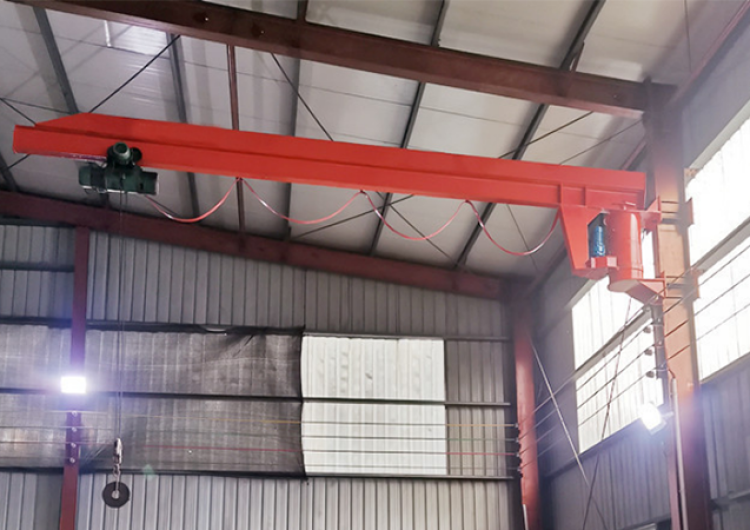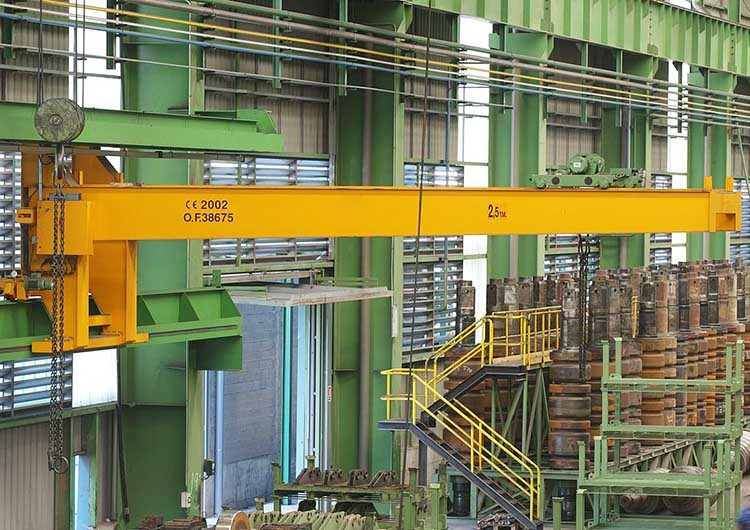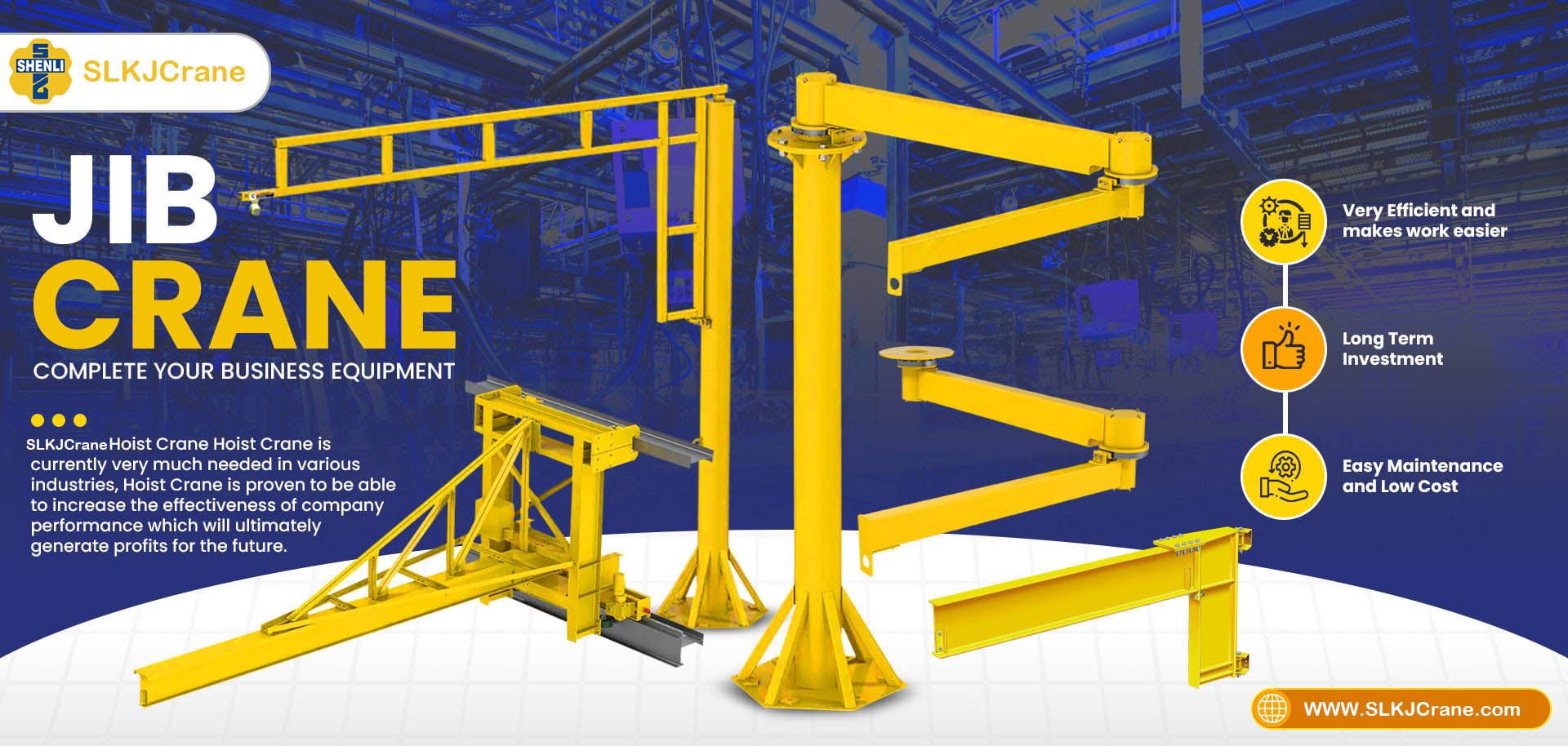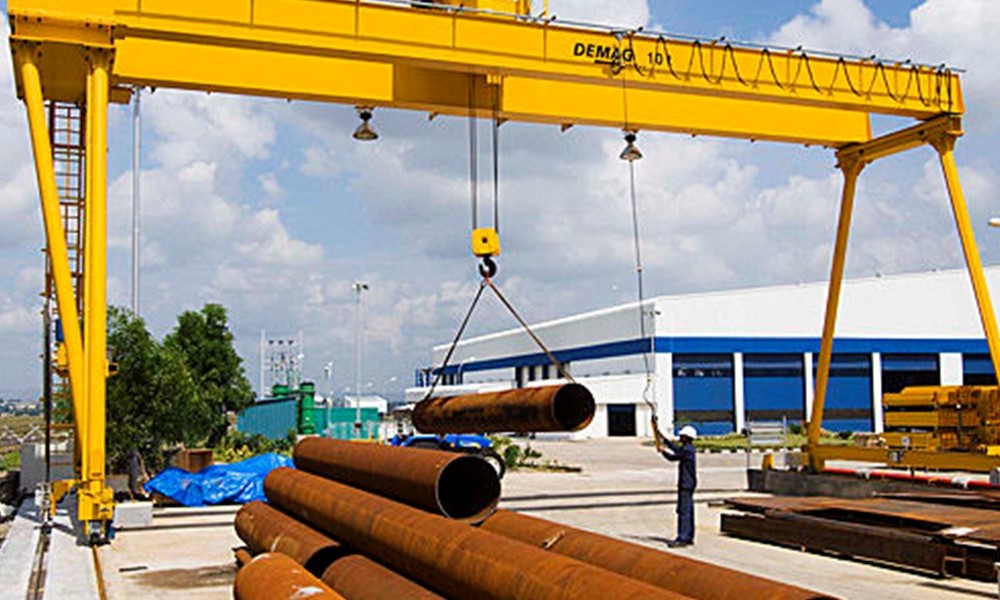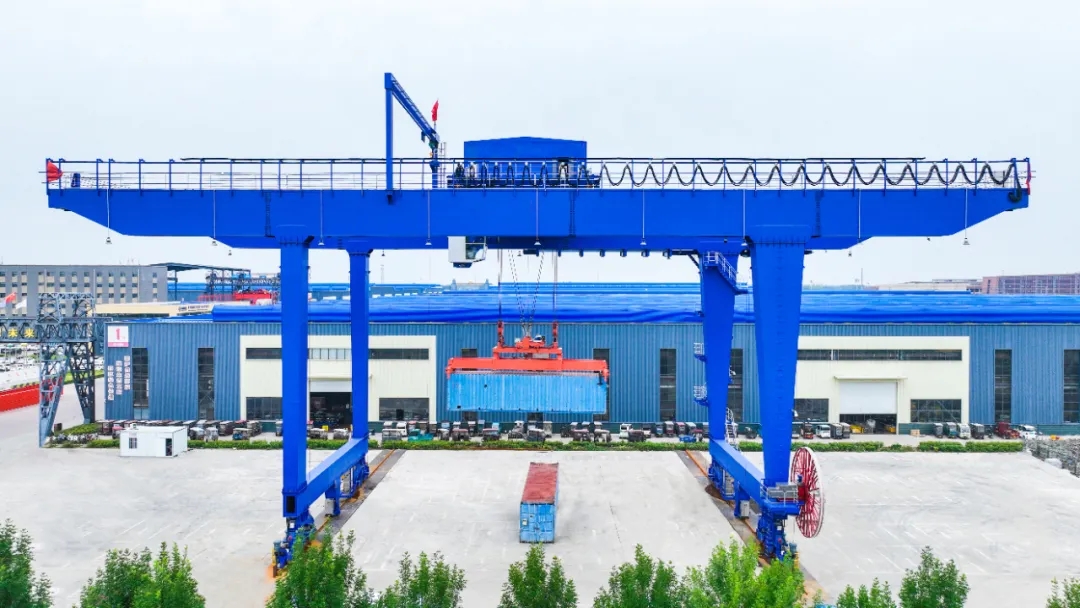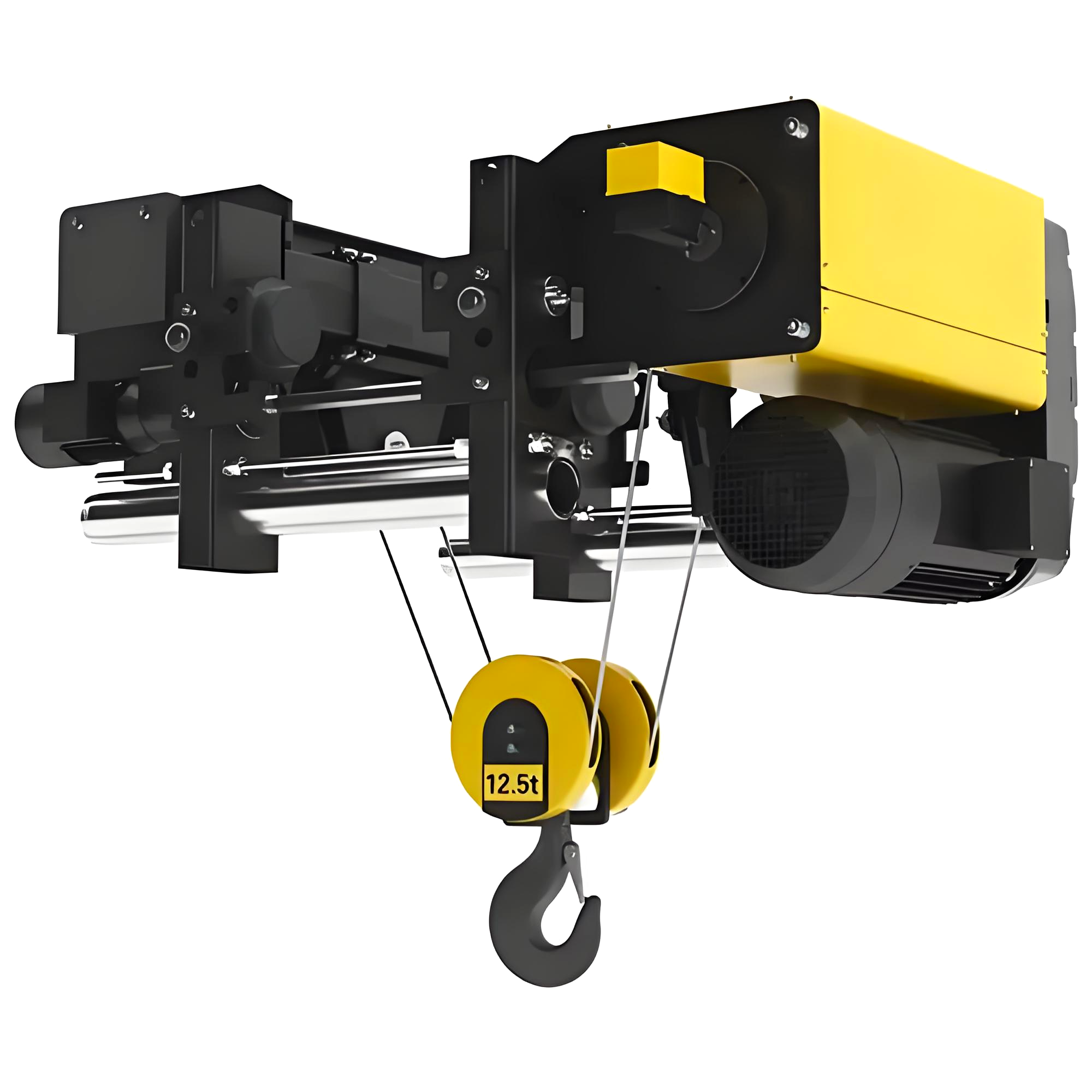5 Key Factors for Selecting the Right Jib Crane: A Complete Guide from Parameters to Budget
Introduction
A jib crane—often called a cantilever jib crane or industrial jib crane—is one of the most flexible and compact lifting solutions used in workshops, factories, and warehouses. It offers localized handling capability without occupying large floor space. However, choosing the right model—whether a pillar jib crane, wall-mounted jib crane, or wall-travelling jib crane—requires technical insight. The wrong selection can affect productivity, safety, and overall cost efficiency.
This technical-marketing guide from SLKJ Crane walks you through every key consideration—from crane types and parameters to budgeting and installation—to help you make a confident, data-driven decision.
What Is a Jib Crane?
A jib crane is a light- to medium-duty lifting device that relies on a column, wall, or fixed rail for operation. It is usually electrically driven, designed for repetitive, small-batch material handling within a defined radius.
Core Features of a Jib Crane:
-
Supported by a column, wall, or floor-mounted rail
-
Motorized or manual drive for smooth, precise motion
-
Rotating boom (180° or 360°) covering localized working areas
-
Ideal for workshops, assembly lines, and warehouse stations
Learn more about product families here:
Three Main Types Compared: Which Jib Crane Fits Your Application?
| Dimension | Pillar Jib Crane | Wall-Mounted Jib Crane | Wall-Travelling Jib Crane |
|---|---|---|---|
| Rated Capacity | 0.5 – 10 t | 0.25 – 1 t | 2 – 16 t |
| Working Radius | 3 – 15 m | 3 – 15 m | Linear coverage along rail |
| Frequency of Use | High | Medium – High | High |
| Operation Mode | Electric drive | Mostly electric / some manual | Electric with travelling carriage |
| Typical Application | Open workshops, assembly lines | Narrow areas beside walls | Long production or logistics lines |
Each industrial jib crane serves a distinct purpose, balancing installation complexity, lifting capacity, and coverage area.
Detailed Analysis of Each Jib Crane Type
Features
-
Independent column with strong stability
-
360° rotation for multiple workstations
-
High load capacity for heavy parts
-
Requires ground space and proper foundation
Typical Applications
-
Large workshops, mechanical assembly lines, port cargo areas
-
Automotive engine installation, container short-haul handling
Advantages
-
Flexible coverage and easy integration with overhead cranes
-
Ideal for frequent, heavy-duty lifting cycles
Features
-
Saves floor space—mounted directly on wall or pillar
-
Load limited by wall structure strength
-
Rotation angle up to 180° for localized handling
Typical Applications
-
Production lines along walls, warehouse racks, maintenance stations
-
Electronic assembly, small component handling
Advantages
-
Compact, efficient, low installation cost
-
Perfect for light to medium loads ≤ 1 ton
Features
-
Linear coverage along rail or steel track
-
Can link multiple cranes for extended coverage
-
Requires rail foundation and steel support
Typical Applications
-
Large warehouses, logistics centers, automated assembly lines
-
Vehicle body welding lines, sorting and distribution systems
Advantages
-
Ideal for continuous linear operations
-
Supports synchronized, multi-station handling
3. Core Differences Between the Two Cranes
| Comparison Criteria | Pillar Mounted Jib Crane | Wall Mounted Jib Crane |
|---|---|---|
| Flexibility | 360° rotation, wide coverage, highly adjustable direction | 180°-270° rotation, fixed track operation, less flexibility |
| Space | Requires ground space for the jib arm’s radius, suitable for high-ceiling open spaces | Does not occupy floor space, ideal for low-ceiling, equipment-dense workshops |
| Structure | Independent pillar + jib arm, complex but stable structure | Jib arm fixed to the wall, simple structure, relies on wall strength |
| Cost | Higher initial cost (+30%-50%), easy maintenance | Lower equipment cost, but wall reinforcement required (+20%-30%), higher maintenance cost |
Key Selection Parameters: Drive, Safety & Maintenance
1. Drive System Options
-
Electric Drive: For heavy or high-frequency tasks; smooth, high-efficiency control; higher initial cost.
-
Manual Drive: For low-frequency, light-load applications; cost-effective but labor-intensive.
2. Safety Requirements
Comply with ISO 11660 and GB/T 24818 standards.
For special environments:
-
Explosion-proof workshops: Use components meeting GB 3836 / IECEx.
-
Food & pharmaceutical plants: Stainless-steel 304 structure for corrosion resistance.
Essential Safety Devices
-
Overload protection
-
Limit switches for hoisting & rotation
-
Emergency stop button
-
Anti-collision sensor for hazardous zones
3. Maintenance & Cost Balance
-
Monthly: Inspect gears, bearings, and fasteners.
-
Quarterly: Test limit switches and overload protection.
Long-Term Cost Considerations
-
Electric models consume more energy but require less maintenance than manual ones.
-
Track systems of wall-travelling types require regular rail alignment checks.
Cost Analysis: Balancing Initial Investment and Lifecycle Expense
| Type | Initial Cost (USD) | Installation Time (Days) | Annual Maintenance Cost (USD) | Key Configuration Notes |
|---|---|---|---|---|
| Wall-Mounted Jib Crane | Manual 1 k – 3 k / Electric 5 k – 12 k | 1 – 5 | 200 – 500 | Electric hoist, wireless remote (optional) |
| Pillar Jib Crane | 4 k – 7 k | 7 – 20 | 300 – 1 000 | VFD control, overload protection |
| Wall-Travelling Jib Crane | 14 k – 25 k (incl. rail) | 15 – 45 | 1 000 – 6 000 | Domestic / imported rails available |
Note: Costs vary with brand, configuration, and load rating. Figures above represent typical market ranges for industrial jib cranes in China.
Cost Optimization Tips
-
Select electric drive only for frequent operations to save energy costs.
-
Optimize boom length to actual coverage to avoid unnecessary steel consumption.
-
Evaluate supplier after-sales service — longer warranty means lower lifecycle risk.
From Survey to Installation: Standardized Process & Risk Control
1. Site Survey and Assessment
-
Measure available space and verify floor / wall load capacity (≥ 10 t/m² for pillar jib crane foundation).
-
Map layout and simulate rotation to avoid interference with obstacles or machines.
2. Supplier Communication & Customization
Provide technical data (load, radius, usage frequency) to a qualified jib crane manufacturer in China.
Request complete documents:
-
Structural drawings & foundation requirements
-
Safety certifications (CE / ISO)
-
Installation manual & maintenance plan
Important Precautions
-
Check wall integrity before mounting wall-mounted jib cranes.
-
Reserve adequate clearance for wall-travelling rail systems.
-
Confirm power supply capacity for electric models.
Quick Selection Checklist
| Condition | Recommended Jib Crane Type |
|---|---|
| Load > 2 t | Pillar jib crane or wall-travelling type (for long distance) |
| Narrow space, load ≤ 1 t | Wall-mounted jib crane |
| Need linear transport across stations | Wall-travelling jib crane |
| Limited budget / low usage | Manual wall-mounted or pillar jib crane |
These rules help strike the ideal balance between efficiency, safety, and budget for any cantilever jib crane installation.
Conclusion & Call to Action
Selecting the right jib crane is a multi-dimensional decision that balances efficiency, safety, and cost. From the compact wall-mounted jib crane to the versatile pillar jib crane and the high-reach wall-travelling jib crane, each type plays a vital role in modern material-handling systems.
If you’re planning a new installation or upgrading your existing lifting system, contact SLKJ Crane for a custom solution that fits your capacity, space, and budget. Our engineering team will help you design, manufacture, and install a high-performance cantilever jib crane system built to global standards.

Expert in Overhead Crane/Gantry Crane/Jib Crane/Crane Parts Solutions
Eileen Hu
With 20+ years of experience in the Crane Overseas Export Industry, helped 10,000+ customers with their pre-sales questions and concerns, if you have any related needs, please feel free to contact me!
Frequently Asked Questions (FAQ) About JIB Crane
Select motors rated for ≥ 150 °C with heat-resistant lubricants; use IP54 or higher protection and anti-corrosion coatings.
Yes, after verifying foundation load capacity (≥ 10 t/m² for pillar jib cranes) and checking clear height and power supply compatibility.
The pillar type offers 360° rotation and higher capacity but needs floor space. The wall-mounted type saves space and cost but has limited load and 180° rotation.
Automotive manufacturing, logistics centers, and automation lines that require linear material handling across multiple stations.
As a trusted jib crane manufacturer in China, SLKJ Crane offers custom solutions, ISO-certified quality, and on-site engineering support for all pillar, wall-mounted, and wall-travelling jib cranes.
5 Key Factors for Selecting the Right Jib Crane
5 Key Factors for Selecting the Right Jib Crane: A Complete Guide from Parameters to Budget Introduction A
Overhead Crane Systems for Steel Mills | A7–A8 Guide
Overhead Crane Systems for Steel Mills: Engineering Guide, Selection Matrix, and Lifecycle ROI Executive Summary Steel plants run
Rail Mounted vs Rubber Tired Gantry Cranes for Container Yards
Choosing the Right Gantry Crane for Container Yards: Rail-Mounted vs. Rubber-Tired Introduction: Why the Right Crane Matters Container
Top 5 Reasons to Choose a European Wire Rope Hoist
5 Reasons to Choose a European Wire Rope Hoist The European wire rope hoist has become one of
Contact Us Now
Have questions about our cranes or need help?
Reach out to our friendly team for expert support and guidance.
We are here to help you power your journey towards a greener future !
Address: Crane Industry Park, Xinxiang City Henan Provice

